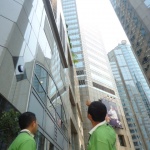[restabs alignment=”osc-tabs-left” responsive=”false”][restab title=”พันธกิจ” active=”active”]
เป็นบริษัทตรวจสอบงานวิศวกรรมอาคารครบวงจรที่มีประสบการณ์ และความชำนาญในงานอาคารทุกประเภท
[/restab] [restab title=”วิสัยทัศน์”] “มุ่งสู่การเป็นบริษัทบริหารจัดการด้านวิศวกรรมอาคาร“[/restab] “ทุกการตรวจสอบ มั่นใจใน “คุณภาพ” พร้อมให้บริการ“[/restab][/restabs] |
ประวัติที่มาของบริษัทบริษัท โมสท์ คอนซัลแตนท์ จำกัด ก่อตั้งขึ้นเมื่อธันวาคม พ.ศ. 2556 ด้วยทุนจดทะเบียนเริ่มต้น 3 ล้านบาท โดยมีวัตถุประสงค์ที่จะให้บริการ
ด้วยทีมงานด้านวิศวกรรมมืออาชีพรุ่นใหม่ที่พร้อมดูแล แนะนำ และให้คำปรึกษา เพื่อตอบทุกความต้องการของคุณอย่างมืออาชีพ จาก ประสบการณ์ตรงของทีมงาน และด้วยการบริการที่หลากหลายรูปแบบที่สามารถปรับเปลี่ยนเพื่อให้ตอบสนองกับ ความต้องการของเจ้าของอาคารได้อย่างเหมาะสมและเป็นไปได้จริง |
